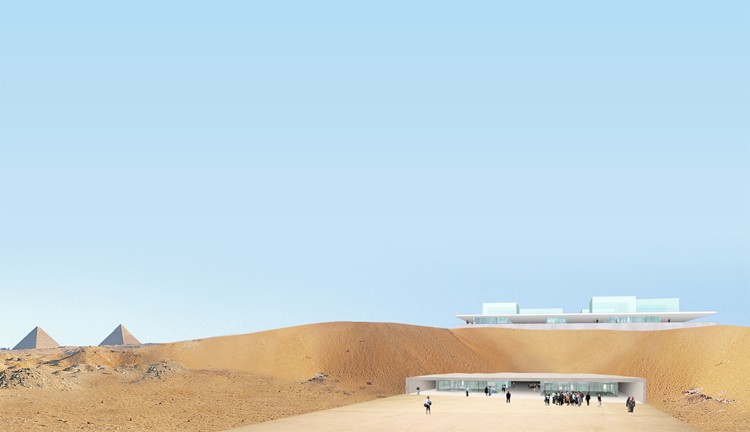Grand Egyptian Museum

A competition entry for the new encyclopedic Egyptian National Museum proposes to house the entire collection in the existing slope below ground, organized in chronological strata, starting with the most ancient artifacts at the deepest level and moving up to the more recent collections closer to the surface. Five light wells, which form the vertical circulation and correspond to the five thematic areas of the collection prescribed by the competition brief, penetrate these strata. The visitors may decide to either concentrate on one thematic area and move vertically through the collection, or they may chose to explore the exhibits of a particular period more extensively, moving freely within one chronological layer. Ascending chronologically through the collection and physically through the museum, the visitors will gradually move towards daylight, emerge from the ground and arrive at the plateau. While all spaces pertaining to the collections (exhibition and storage) are below ground, all spaces pertaining to museal operations (administration, conservation and research areas) are housed in pavilions loosely grouped around a central plaza on the level of the plateau.
